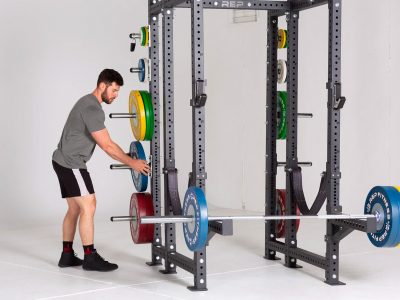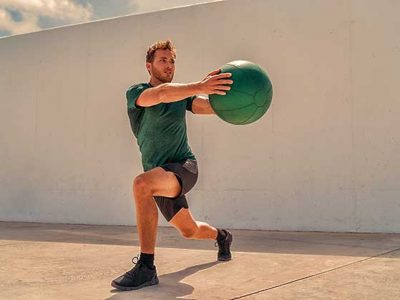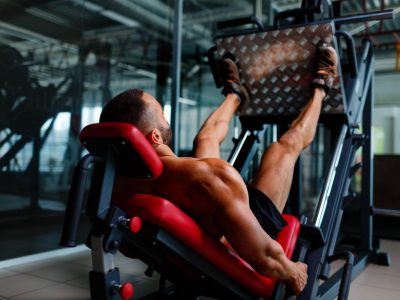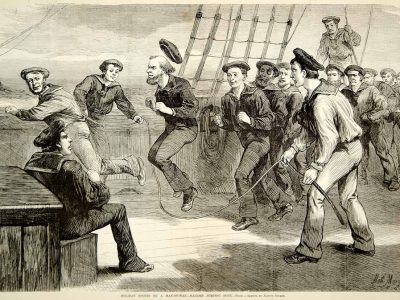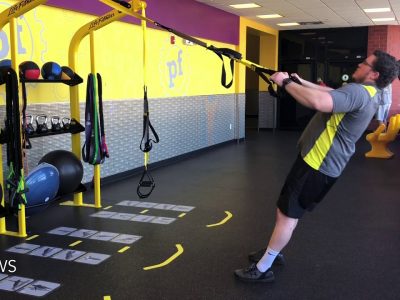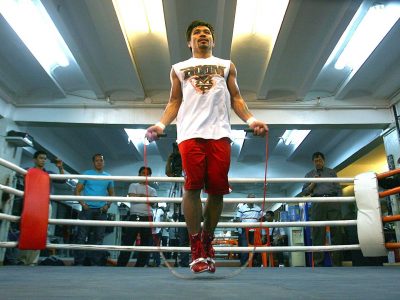Finding the right kettlebell size might seem like a daunting task, especially with so many weight options available.
Research shows that selecting an appropriate weight can significantly improve your workout efficiency and prevent injuries.
Bạn đang xem: What Size Kettlebell Should I Get Updated 07/2024
This guide will equip you with detailed knowledge about choosing the ideal kettlebell size suitable for your individual fitness level and objectives.
Stay tuned if you’re keen to make an informed decision that sets you on track for achieving better strength and conditioning results!
Factors to Consider When Choosing a Kettlebell Size
Weightlifting experience
Your weightlifting experience plays a crucial role in deciding the size of the kettlebell you should get. If you’re a novice with no prior training, start small and aim for kettlebells that weigh around 8 kg or even less; this prevents injuries while your body adjusts to the new form of exercise.
Athletic men who are already active but new to lifting may begin with a slightly advanced starting point – between 12kg to 18kg, allowing an easy progression from beginners level.
Moreover, professional athletes or those accustomed to heavy weights might opt for larger kettlebells around 16 kg right off the bat as their bodies can manage higher resistance due to rigorous previous training sessions.
Thus, understanding your existing strength and capability helps determine your ideal starting point for using kettlebells effectively.
Workout goals
Your workout goals are an essential factor to consider when choosing the right kettlebell size. Whether you’re looking to build strength, increase endurance, or improve overall fitness, your goals will determine the intensity and resistance level of your workouts.
If you’re a beginner or focusing on toning and conditioning, starting with a smaller kettlebell weight is recommended.
For men, this can range from 8 kg – 18 lb to 12 kg – 26 lb, while women can start with sizes around 8-12 kg or approximately 17-26 lbs.
As you progress and become more comfortable with the exercises, gradually increasing the kettlebell weight will help challenge your muscles and continue making progress towards your fitness goals.
Age and current fitness level
The age and current fitness level of an individual are important factors to consider when choosing the right kettlebell size.
For younger individuals or those who are just starting their fitness journey, it is recommended to start with a smaller kettlebell weight, such as 8 kg or 12 kg.
This allows for proper technique development and prevents unnecessary strain on the body. As individuals progress in their fitness level and become more comfortable with kettlebell exercises, they can gradually increase the weight to challenge themselves further.
It’s worth noting that even older adults can benefit from using kettlebells, but it is essential to choose a size that matches their strength and ability.
Ultimately, selecting the appropriate kettlebell size based on age and current fitness level ensures a safe and effective workout experience.
Standard Kettlebell Sizes
Best kettlebell sizes for men, women, kids, and seniors
Here’s a rundown of the best kettlebell sizes for different demographic groups:
| Group | Best Kettlebell Size |
|---|---|
| Men (Beginners) | The right starting weight for most men varies from 8 kg – 18 lb to 16 kg – 35 lb. Athletic men are recommended to start with a kettlebell between 12 kg – 26 lb. As they progress, they may need to upgrade to a 20kg or 24kg kettlebell. |
| Women (Beginners) | For women, it’s best to choose a more manageable kettlebell size to start with. The average active woman doing basic squats should start with a 40 lb kettlebell. As for other exercises, a kettlebell between 8kg to 12kg is recommended. |
| Kids | Kids are recommended to start with smaller kettlebells, as low as 8 kg. It’s crucial to keep safety in mind and ensure that the weight is manageable for them, preventing any injuries. |
| Seniors | Seniors, much like beginners, should opt for lighter kettlebells, around 8 to 12 kg. It’s essential to consider their fitness level and any possible health concerns when choosing their kettlebell size. |
Remember, it’s not just about the weight of the kettlebell but how you use it. Always prioritize form and safety over the size of the kettlebell.
Competition kettlebell sizes
Competition kettlebells are specifically designed for kettlebell sport athletes who participate in competitions.
These kettlebells have standardized sizes and weights to ensure fair competition.
The most common sizes for competition kettlebells are 8 kg (17.6 lb), 12 kg (26.4 lb), 16 kg (35.3 lb), 20 kg (44 lb), and 24 kg (53 lb).
These specific weight options allow athletes to progress in their training and work towards increasing their strength and endurance over time.
When choosing a competition kettlebell, it is important to consider your current fitness level and goals.
If you are new to kettlebell training, starting with a lighter weight like the 8 kg or 12 kg might be more suitable as you build your strength and technique.
On the other hand, if you have been training with kettlebells for a while and aim to compete in kettlebell sport events, opting for heavier weights like the 20kg or 24kg could be appropriate.
Remember that choosing the right size of competition kettlebell depends on individual factors such as experience, athletic ability, and personal preference.
It is always advisable to consult with a qualified fitness professional or coach who can assess your needs and guide you in selecting the ideal competition kettlebell size based on your specific goals.
Properly sizing your equipment plays a crucial role in ensuring effective workouts that optimize results while minimizing risk of injury.
By understanding your own abilities, considering relevant factors such as age, current fitness level, workout goals etc., along with expert guidance – finding an appropriate-sized competition bell becomes less daunting than it may initially seem!
Best kettlebell size for gyms
For gyms looking to provide a range of kettlebell options, it’s important to consider the needs and preferences of your diverse clientele.
Offering a variety of sizes will ensure that everyone can find the perfect fit for their workout routine.
For beginners or those new to weightlifting, starting with lighter kettlebells between 8 kg – 18 lb and 12 kg – 26 lb is ideal.
Intermediate users may benefit from kettlebells ranging from 16 kg – 35 lb, while more advanced athletes might require heavier options in the range of 20 kg – 24 kg.
By offering these different sizes, your gym can accommodate individuals at every fitness level, enabling them to achieve their goals efficiently and effectively.
Determining the Right Kettlebell Size
An average starting weight for women
For women who are just starting out with kettlebell training, it is recommended to begin with a weight between 8 kg – 12 kg (17 lb – 26 lb).
Xem thêm : Does Jump Rope Build Calves Updated 07/2024
This range provides a good starting point for basic exercises and allows for progression as strength and skill improve.
It’s important to choose a weight that challenges you but still allows for proper form and control throughout each movement.
Starting with lighter kettlebells can help build a solid foundation before gradually increasing the weight over time.
Remember, everyone progresses at their own pace, so listen to your body and adjust accordingly.
An average starting weight for men
For men who are starting out with kettlebell training, the recommended average starting weight is between 8 kg (18 lb) and 12 kg (26 lb).
This weight range is ideal for beginners to develop strength and technique without straining their muscles or risking injury.
As you progress in your workouts and become more comfortable with the movements, you can gradually increase the weight of your kettlebell.
Athletes or those with a higher level of fitness may start with a slightly heavier kettlebell, around 12 kg (26 lb), to add an extra challenge to their routines.
Remember, it’s important to listen to your body and choose a weight that allows you to perform exercises properly while still pushing yourself towards improvement.
How many kettlebells do you need?
To determine how many kettlebells you need, it’s important to consider your workout goals and fitness level.
For most individuals, having a set of three different weights is ideal for progression and variety.
Start with a lighter kettlebell for beginners or those looking to focus on conditioning exercises, such as swings or high-rep workouts.
As you progress, add a heavier kettlebell to challenge yourself with strength-based exercises like squats or deadlifts.
Finally, include a medium-weight kettlebell that allows you to perform a wider range of exercises comfortably.
This way, you can continuously challenge your body while avoiding plateaus in your training routine.
Conclusion
In conclusion, when it comes to choosing the right kettlebell size, it’s important to consider factors such as weightlifting experience, workout goals, and current fitness level.
For beginners, starting with smaller kettlebells is recommended, gradually increasing the weight as strength improves.
Remember that everyone’s needs and abilities differ, so finding the perfect kettlebell size for you may require some trial and error.
With the right size kettlebell in hand, you’ll be well on your way to achieving your fitness goals!
Nguồn: https://usgyms.net
Danh mục: Gym Equipment

